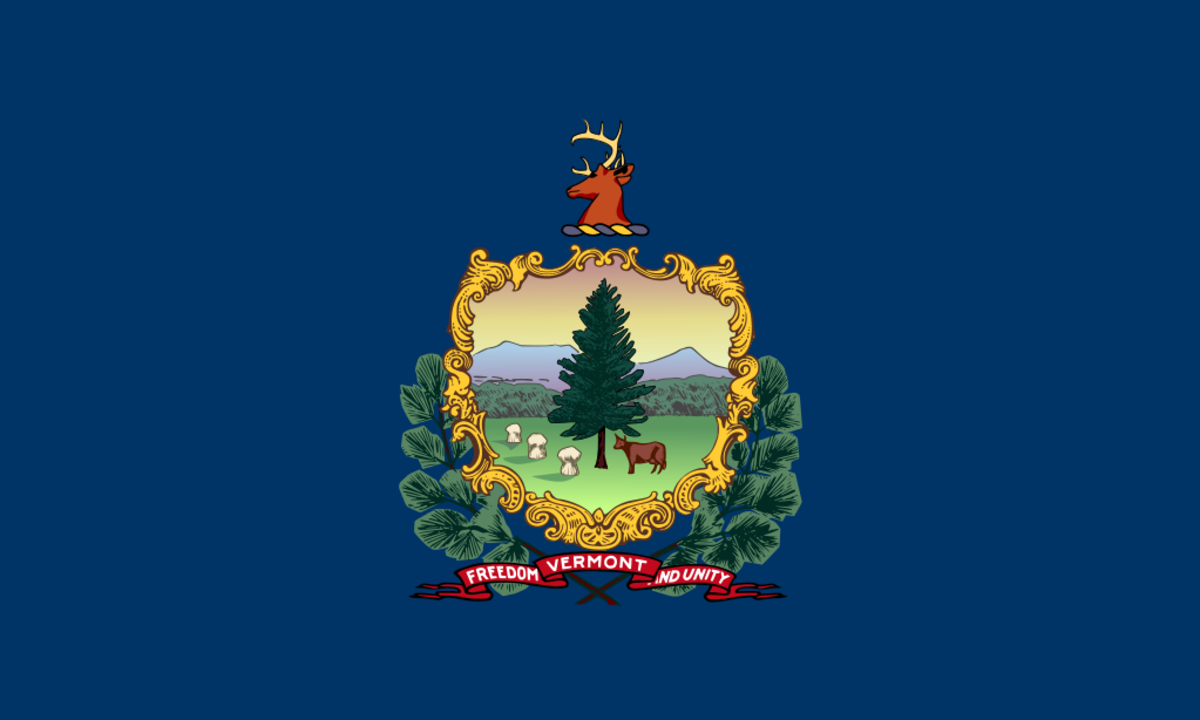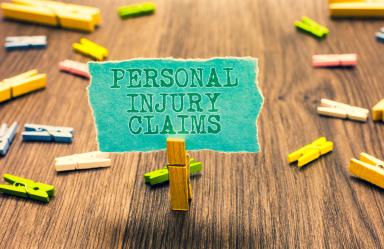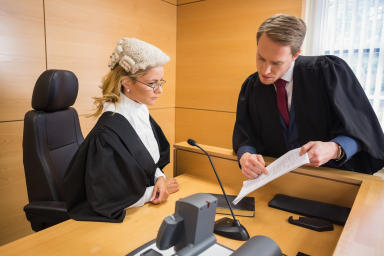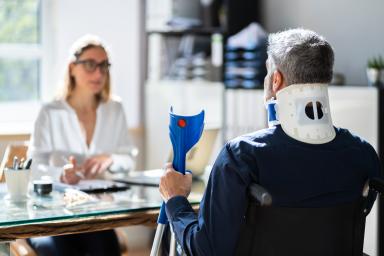Vermont Personal Injury Laws

It would be unfortunate to be involved in an accident, especially if it led to a grave outcome. In Vermont, a troubling trend is the increase in traffic accidents resulting in severe injuries, based on Vermont State Highway Safety Office data. Over 280 serious injuries were recorded in 2021, an almost 20% rise from 235 in 2020.
Accidents do not just happen on roads but also in workplaces. In fact, Vermont has a higher on-the-job injury and illness rate than most states.
Being involved in an accident can use up your resources — including your time, effort, and mental and emotional bandwidth — since it requires you to work with multiple parties. These may include law enforcement agencies and insurance companies. The latter can typically provide compensation for your injuries. However, in some cases, the damages you might receive from your insurer are inadequate to support your recovery process. Therefore, filing a personal injury claim is a viable next step.
At times, experiencing an injury can be isolating, but do know that you have company. In 2022 alone, over 110 Vermonters filed personal injury claims before a court.
As you move forward and seek justice, let this article show you the legal rights you have in different situations. It also provides information regarding the caps on damages you can receive and the statute of limitations that may apply to your case. In addition, this article has a list of resources that can help you with the claims process.
Vermont Laws about Personal Injury Claims against the Government
Vermont roads are ranked third best in the country, according to a 2023 Consumer Affairs report. Only 4% of the state’s rural roads and 9% of its urban thoroughfares are in poor condition. However, the report noted that Vermont has to factor in the increasing severity of winter storms in its infrastructure planning.
Since lawsuits are allowed against public agencies or employees, they can be held liable for negligence-related road accidents. Notably, counties and municipalities that purchase liability insurance waive their sovereign immunity. In other words, plaintiffs can bring claims against them, but their liability is limited within the boundaries of their insurance coverage.
There are certain situations where one cannot sue a government entity. One is when a state employee gets involved in an accident while exercising due care. Another is when Vermont highway planners and designers deliberately depart from a specific set of planning standards.
Premises Liability Laws for Hunters in Vermont
At least 70,000 hunters shoot deer in Vermont during the fall season, taking more bucks per square mile than in other New England states. In addition to locals, tourists flock to the Green Mountain State to participate in this recreational activity.
With hunting, which often takes place not just on public lands but also on private properties, it is essential to acknowledge that accidents may occur. As such, hunters should know how premises liability laws in Vermont work.
Landowners are not liable for personal injuries arising from recreational activities. This exemption extends to incidents involving a landowner’s equipment, personal property, and machinery. However, they may become liable if they charge fees since payment or any form of consideration requires them to exhibit a higher level of care toward hunters within their premises.
The state also allows hunters to use properties without permission, although asking for one is recommended. Nevertheless, people cannot hunt on lands that contain legally posted signs that prohibit the activity.
Vermont Workers’ Compensation Laws
According to the Bureau of Labor Statistics, Vermont had a non-fatal illness and injury rate in 2021 that stood out compared to other states’ numbers. It had 3.8 cases per 100 workers, which is higher than the average of 2.7 among the 41 participating states.
In Vermont, injured individuals must file a workers’ compensation claim to obtain the help they need to recover. The process for doing so begins with a notice to the employer as soon as possible after the accident. The employer must then submit a First Report of Injury or Form 1 to the Vermont Department of Labor within 72 hours of notice. A duplicate report should also be sent to the insurance company, which has 21 days to investigate the claim and decide whether the employee’s injury is covered.
State law penalizes employers that fail to process claims promptly. Businesses that do not submit Form 1 within 72 hours of notice face a $100 fine. If they do not provide a Form 1 copy to their employee, they also have to pay a $50 fine. Vermont does not let slow-moving insurers off the hook either. They face a $500 fine if they cannot promptly decide whether an injury is covered.
Workers who receive claim denials from insurance companies can dispute the decision before the state labor department. The first step in the appeals process is an informal hearing involving the insurance company, the employee, and a specialist from the department. Aside from disputes over denials, informal hearings help parties resolve issues over an insurance company’s failure to reimburse medical bills.
The next step, if one of the parties is unsatisfied with an informal hearing, is mediation. The worker and insurer may proceed to a formal hearing if no agreement is reached. This meeting is typically held in a Department of Labor office in Montpelier. The formal hearing is concluded with a decision by a hearing officer.
A party may also appeal the decision to the applicable Superior Court within 30 days of receiving the outcome. If no claim is filed after the deadline, either party can request that the case be transferred to the Vermont Supreme Court.
Social Host and Dram Shop Laws in Vermont
In 2022, 77 individuals passed away in motor vehicle accidents. The number represents a 10-year high for the state, which has not seen similar data since 2012. A concerning statistic among these fatalities was the impact of intoxicants. Indeed, more than half of those who died were driving under the influence of drugs or alcohol.
In these accidents, dram shops (or establishments that serve alcoholic drinks) and social hosts may be held liable in addition to the at-fault driver. Providing alcohol to people who are already visibly drunk could be grounds for a lawsuit. It is also possible to press claims against those who knowingly served alcohol to minors or who gave a certain amount of alcohol to a person that would leave them intoxicated.
Another reason for a lawsuit is if alcohol was served to a driver after legal hours. Under state law, businesses with first- or third-class licenses cannot sell spirits and malted beverages after 2:30 a.m. On New Year’s Day, this may be extended to 3:30 a.m.
Social hosts and dram shops are not the only possible defendants in alcohol-related accident cases. Vermont also allows claims against landlords if there is evidence that they were aware their tenants furnished or sold alcohol to a driver that caused an accident.
Vermont Medical Malpractice Laws
Being a senior does not just mean an increased risk for accidents like falls. They also have a greater need for medical care. Additionally, older adults are significantly more prone to harm caused by negligent healthcare providers. These details are relevant in the state of Vermont since around a quarter of its population is over 65 years old. This statistic makes the Green Mountain State the fourth oldest state in the country.
One way plaintiffs can recover compensation for their injuries is by filing a medical malpractice lawsuit. The main requirement for one is a certificate of merit containing proof that one's healthcare provider deviated from their standard of care, as attested to by at least one qualified expert. This departure from the standard must be indicated as the cause of the plaintiff’s injury. If a certificate of merit is missing from a medical malpractice claim, a court will likely dismiss it.
Another important thing to note is the accountability of certain medical workers. Vermont law imposes negligence liability on physicians, even if they delegate specific activities to employees like medical technicians. This liability, however, does not apply to nurses. Physician assistants, likewise, are accountable for their own decisions.
Vermont Business Liability Insurance Requirements
Vermont mandates all businesses obtain workers’ compensation insurance. It should allow covered employees to deal with various costs in the event of an injury, including vocational rehabilitation expenses and medical treatment bills.
Companies that own vehicles are also subject to the following minimum auto insurance requirements set by the state:
$25,000 for the death or injury of one person.
$50,000 for the death or injury of two or more people.
$10,000 for property damage per accident.
Another requirement is insurance against underinsured, uninsured, or unknown motorists. The coverage minimums mandated by Vermont are $50,000 per person and $100,000 for two or more people, as well as $10,000 for property damage.
An alternative to these requirements is self-insurance. Businesses can set aside $115,000 to prove their financial responsibility to the state.
Businesses that operate specific vehicles face higher insurance requirements. For example, school buses designed to carry nine people at the most must be covered for $100,000 per person and $300,000 per accident. These limits increase to $500,000 per accident for buses with a passenger capacity of over nine people. There should also be insurance coverage for property damage worth $50,000.
Moreover, those who own jitneys need insurance policies that cover $50,000 for the injury or death of one person. For the injury or death of all passengers in an accident, the policy limit must be at least $100,000. These apply to jitneys with a passenger capacity of seven or fewer.
Vehicle operators that travel throughout the state face penalties if they do so without insurance. These include fines of up to $500 and license suspension.
Is Vermont a No-fault State?
Not at all. Vermont is an at-fault state, which means plaintiffs may bring insurance claims against defendants to recover compensation for their medical expenses.
Individuals can also go to their own insurer for accident-related costs. If a policyholder has comprehensive insurance, for example, they can recover expenses from animal, theft, flood, or vandalism damage. Another add-on is collision coverage, which allows policyholders to deal with vehicle repair costs related to driving into objects.
There are other situations where Vermonters may turn to their insurance provider. These include collisions brought on by uninsured or underinsured drivers, as well as hit-and-run incidents where the responsible parties cannot be located. Particularly in Vermont, where 8.8% of drivers lack financial protection, insurance policies that cover damage from uninsured drivers are beneficial.
Is Vermont a Modified Comparative Fault State?
Yes. Similar to most states, Vermont follows a modified comparative fault system. Plaintiffs are permitted to recover damages if their fault for an accident does not exceed the defendant’s.
Note that Vermont courts adhere to the 51% bar rule — victims are entitled to damages for their injuries if their share of responsibility for the accident is less than 51%. However, that share diminishes the amount of damages a plaintiff may receive from the defendant.
To demonstrate this, let’s say you were involved in an accident that caused $100,000 in damages. A court may determine that you are responsible for 20% of the accident, decreasing your award by $20,000 to $80,000. This reduction is performed to account for your share of the fault for the accident.
How Much Can Someone Sue for an Injury in Vermont?
Vermont does not cap the economic and non-economic damages that plaintiffs may obtain from defendants. To put it differently, accident victims are not limited in the amount of compensation they can receive from the liable parties for their medical expenses and emotional distress. Similarly, the state does not apply any caps on punitive damages.
However, limits do exist in cases involving wrongful or negligent acts caused by the government. Since 2011, a public agency may be liable for only up to $500,000 per person and $2 million per accident.
Another thing to note is that Vermont follows the collateral source rule. Defendants cannot claim before a court to reduce the damages they owe to plaintiffs just because they obtained benefits from other sources. These sources may include insurance policy payouts, pensions, and tax benefits.
The Statute of Limitations in Vermont
Plaintiffs in Vermont have three years to file lawsuits against defendants. The three-year window starts on the day the injury was incurred. Likewise, medical malpractice victims have three years to press legal action against liable healthcare providers. Individuals can also file malpractice claims within two years of their injury’s discovery. However, no lawsuits may be filed after seven years from the date of the medical incident.
Vermont gives victims’ representatives two years to file claims against defendants in wrongful death cases. If the liable party is out of the state, then the two-year window begins when they return or come to Vermont.
Legal Resources for Injured Folks in Vermont
Vermont Agency of Transportation
The agency employs over 1,200 workers who plan, build, and maintain transportation infrastructure throughout the Green Mountain State. It also operates the Public Crash Data Query Tool, which allows Vermonters to check multiple details about any particular accident that occurred in the state. Some information individuals can view includes the type of road and weather on the day of an accident. Another area that the agency is responsible for is crash reports. One should submit a form to notify the DMV of accidents involving death, injury, or property damage worth at least $3,000. Individuals may also request crash reports through the department by calling 802-828-2000.
Vermont Bar Association
For more than 140 years, the association has been promoting professionalism and ethics in the legal sector in Vermont. It oversees the Client Security Fund, allowing locals to reimburse their losses from dealings with dishonest lawyers. A claimant can only receive a maximum of $75,000 to compensate for an instance of dishonest conduct. Another program the association manages is the Lawyer Referral Service, which helps people deal with their concerns about various legal areas, from workers’ compensation to medical malpractice. Through an initial 30-minute consultation, the service provides a way for Vermonters to understand their legal needs. One can check the program online or call 1-800-639-7036.
Vermont Department of Financial Regulation
The department has been regulating Vermont's insurance and banking industries since 1923. It aims to help consumers receive fair treatment from financial services companies regarding contracts. To educate people on how to avoid insurance fraud-related scams, the department maintains a website that contains educational documents. It also allows individuals to submit complaints regarding their insurance provider’s life, dental, and homeowner’s policy offerings. One may contact a department representative by emailing dfr.insuranceinfo@vermont.gov, calling 800-964-1784, or sending a letter addressed to:
Department of Financial Regulation
89 Main Street
Montpelier, VT 05620 - 3101
Expertise.com StaffAuthor
Step into the world of Expertise.com, your go-to hub for credible insights. We don't take accuracy lightly around here. Our squad of expert reviewers, each a maestro in their field, has given the green light to every single article you'll find. From rigorous fact-checking to meticulous evaluations of service providers, we've got it all covered. So feel free to dive in and explore. The information you'll uncover has been stamped with the seal of approval by our top-notch experts.




